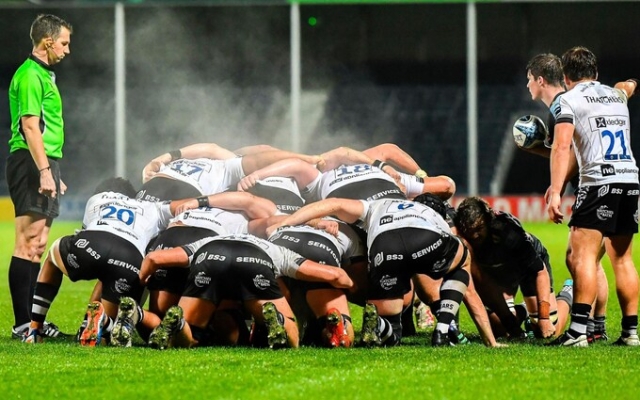 Scrums will remain predictable as long as sides can rotate all their forwards during the match, preventing fatigue. Photo: Graham Hunt/Shutterstock
Scrums will remain predictable as long as sides can rotate all their forwards during the match, preventing fatigue. Photo: Graham Hunt/Shutterstock
Last week Exeter director of rugby Rob Baxter called for the scrum to be turned into a «real pushing competition» to make the game more exciting for spectators.
He said: «It used to be it was too easy not to fight. You have to squeeze 16 guys… and turn it into a real pushing competition, which is a tiring element for big forwards.»
He continued, adding: «It could be over in three seconds because someone dived on gender… Let's get to the fight first and that will open up the rest.»
While acknowledging Baxter's right to have any opinion about any aspect of rugby, there are gaping flaws in this reasoning.
Scrums themselves excite few people. Typically, they only become tense when they are close to the opposition line or when there is a chance of a penalty in the final minutes of a tied game. The rest of the time they are incomprehensible to many — including the majority of judges.
The idea is that if every scrum is an all-out pushing contest, the forwards will get tired and won't be able to cover much of the field, creating more space for others to exploit.
However, you can't be sure that there will be enough fights in the game to achieve this effect. Last season's Six Nations game between Ireland and France, considered by many to be one of the best Six Nations games ever played, featured just five scrums. It is the intent to attack that creates lasting excitement in most people, not the narrow confines of the competition, which essentially takes place between the front two rows. Even if you could create such a scenario, you can't be sure that teams currently playing with rigid game plans will run the ball rather than just execute planned shots.
Remember what brought us to our current situation. Ten years ago, when the umpires didn't require the hooker to hit and the ball was often passed to the back row, it was just a pushing fight. This resulted in every third scrum resulting in a penalty, and the rugby community complained loudly. World Rugby introduced a mandatory kick for a hooker and the current scrum-to-penalty ratio dropped to one in five. Fighting is often used for its intended purpose — as a way to restart the game.
When you scrimmage for the sake of pushing rather than to win and use the ball, you get the very result that Baxter is complaining about. Teams that are pushed back are almost always punished, sometimes even if they technically committed no foul. To prevent this from happening, the front row, under pressure, dives to the floor, knowing that there is at least a chance that the referee will punish the other front row. This works because virtually no elite level referees have ever played front line and they just guess and guess. How could Baxter prevent this inevitable pattern of reasoning and action?
To make matters worse, defenders are completely redundant during this contest, and given that the vast majority of penalties in a scrum result in either a kick on goal or a touch-in followed by a throw-in, they are left kicking their heels for the ensuing play because, well .
Unlike any other part of the game, when a team loses a fight, they can be penalized simply for not being as good as their opponents. They can be beaten in the lineout and all that will happen is the ball will be lost. This discourages teams from playing rugby in their own half of the field. If they kick the ball they risk losing three points from the penalty spot. In fact it goes further; the opposition can kick the ball in their own half, push it away in a scrum and get three points from the inevitable penalty.
The only way to realize Baxter's vision is to change the substitution laws. Previously, the effect of fatigue was achievable and happened. You can't do that when you could literally change all eight forwards if that's a gamble you're willing to make with your bench. Make scrums more important as a penalty and see how many teams repeat the Springboks and opt for a 7-1 back-to-back split on the bench.
This is where the fatigue factor really needs to be taken into account. work consistently. Not only will the forwards get tired of playing for 80 minutes; they will have to lose mass. This way, you can reverse the seemingly inexorable trend toward size and brute strength. Unfortunately, in today's game this option is instantly dismissed as dangerous, even though no evidence is presented to support this knee-jerk response.























































Свежие комментарии